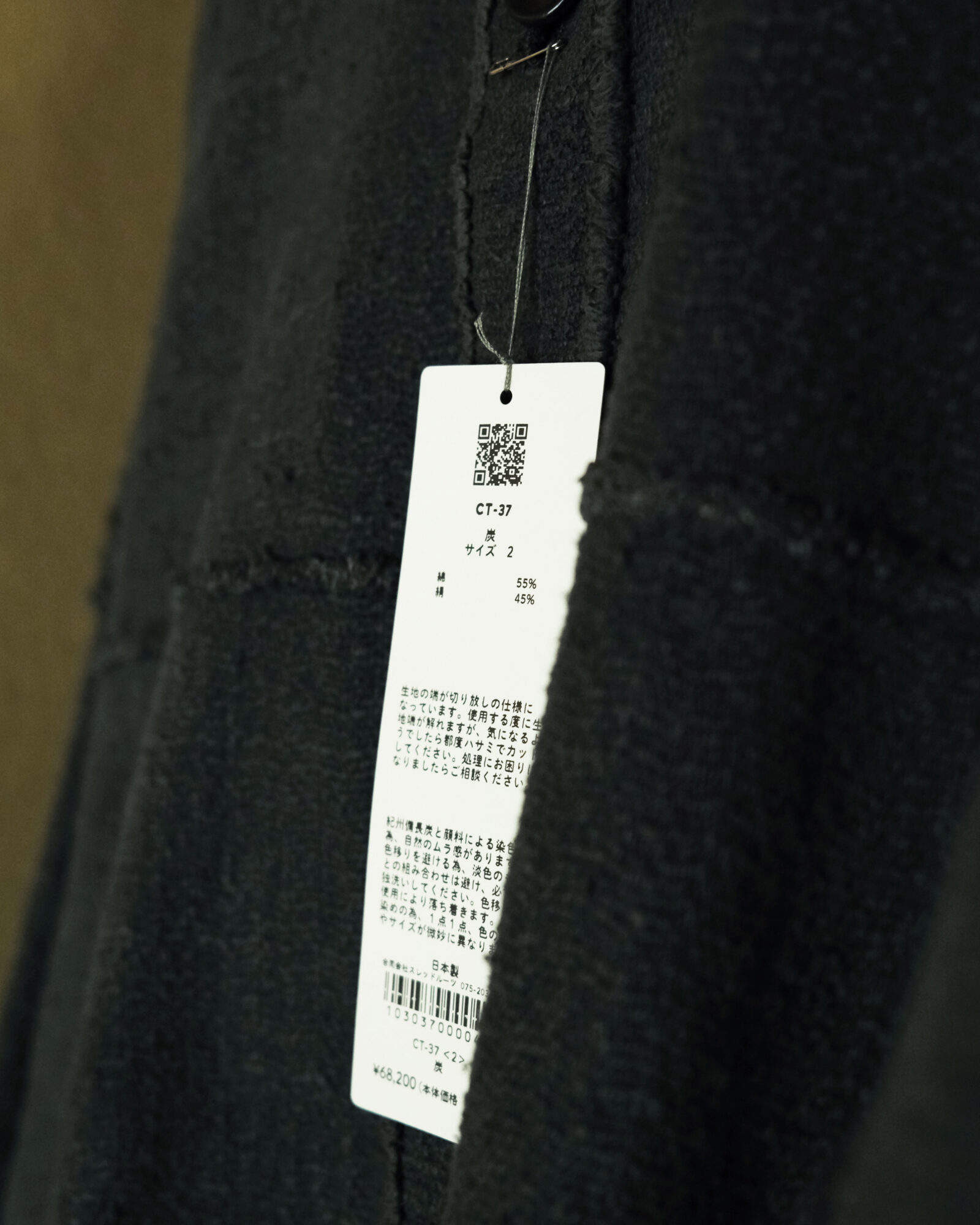A Garment’s Background
Even when a garment has been worn for many years, pieces whose makers are known to us are often kept with care. A sweater knitted by one’s mother, or a hand-made piece by a familiar artisan, is not easily discarded in the same way as a mass-produced item. At MITTAN, by conveying as much of each product’s background as possible, we hope to help foster a good relationship with clothing—so that our pieces are worn with attachment, and for a long time.
By scanning the QR code printed on a MITTAN hangtag, you can access a product notes site. There you will find the characteristics of the fabric and design, as well as the places involved from raw-material production through spinning, weaving, dyeing, finishing, and sewing. Our products are made in collaboration with factories and workshops that each hold specific technical strengths. Where our partners have their own websites, you can follow the linked place names to visit them. In this way, you can learn about the origins, contexts, and distinctive techniques of the facilities involved in making the piece you hold.
We also care not only about the background of a garment, but about where it goes. For reasons that include traceability, the hangtag uses RFID (electronic tag) technology *1. While the paper is FSC-certified*2, it contains a metal antenna. When no longer needed, please dispose of it in accordance with the regulations of your local municipality.
A skilled craftsperson, on taking a garment in hand, can often tell at a glance—by the fabric, its weave, and the method of dyeing—where it came from and how it was made. From the silhouette and sewing, they may even imagine the maker’s technique and the line of thought that led to completion. Even today, when the accumulation of such hands-on experience has become more difficult, we want to maintain an environment in which those who wish to learn can access information.
- RFID (electronic tag): A small device embedded in the hangtag that enables identification and management of product information without direct contact.
- FSC certification: Paper certified by the Forest Stewardship Council; the hangtag paper meets this standard.
